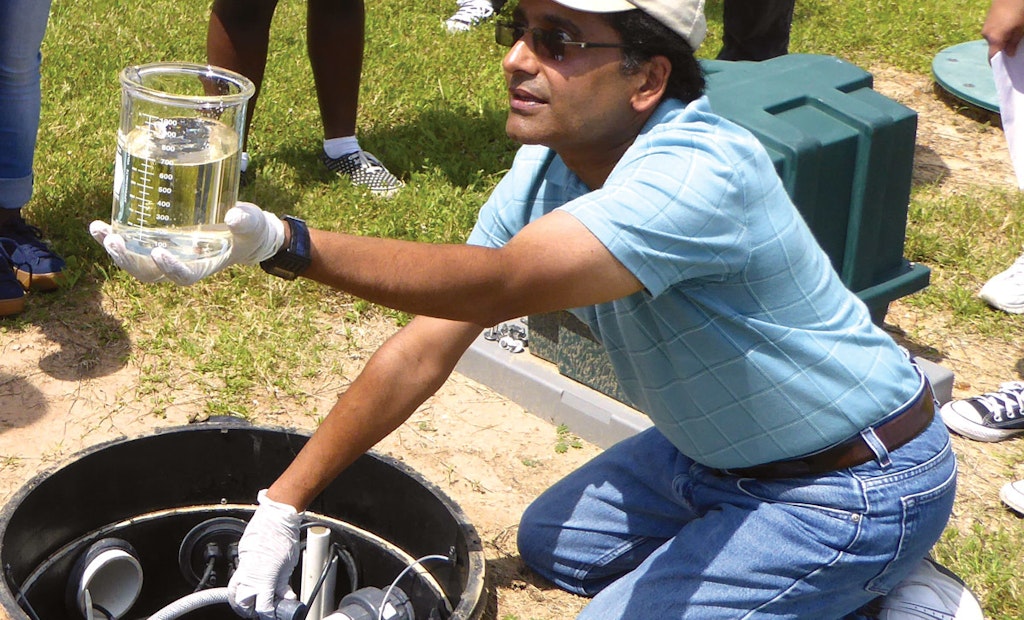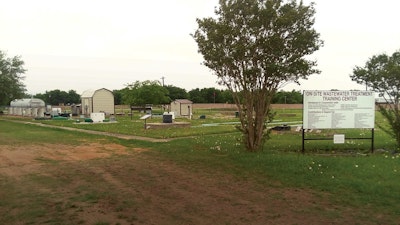
Anish Jantrania, associate professor and extension specialist at Texas A&M University, holds up a beaker of water from an onsite system during an event at the university’s On-Site Sewage Facility.
The RELLIS Campus at Texas A&M University was forged through partnerships with the school and private companies in 2016. The campus derives its acronym name by mimicking six university core values: Respect, Excellence, Leadership, Loyalty, Integrity and Selfless service.
Anish...






